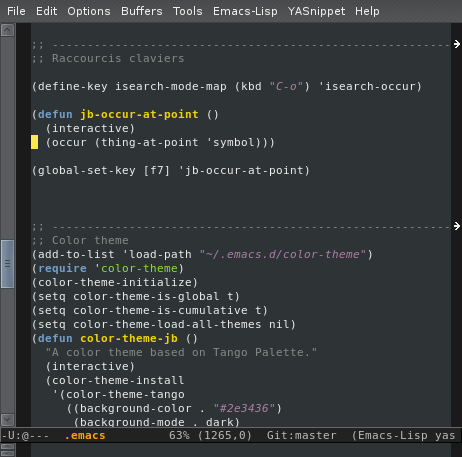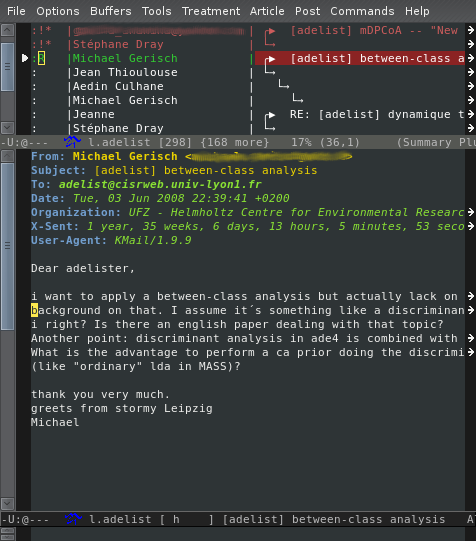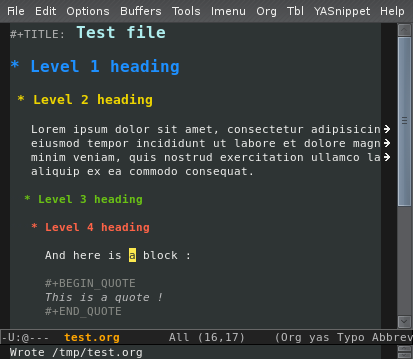EDIT : This post is now quite deprecated. Installation instructions and new versions are posted on the github project page.
I just updated my original ”tangotango” emacs color theme, based on the tango palette colors. I’ve tweaked some details and moved the source code to github. Here are updated installation instructions and screenshots :
Installation instructions
- Download and install the
color-themeemacs package either via your linux distribution or via the source tarball - Download and install
color-theme-tangotango.elfrom github - Make sure that both
color-theme.elandcolor-theme-tangotango.elare in your load path
There are several ways to load the tangotango color theme from your .emacs, as documented on emacswiki. The way I currently use should work for a daemonized emacs and allows the selection of different themes for GUI or console based frames :
(require 'color-theme)
(setq color-theme-load-all-themes nil)
(require 'color-theme-tangotango)
;; select theme - first list element is for windowing system, second is for console/terminal
;; Source : http://www.emacswiki.org/emacs/ColorTheme#toc9
(setq color-theme-choices
'(color-theme-tangotango color-theme-tangotango))
;; default-start
(funcall (lambda (cols)
(let ((color-theme-is-global nil))
(eval
(append '(if (window-system))
(mapcar (lambda (x) (cons x nil))
cols)))))
color-theme-choices)
;; test for each additional frame or console
(require 'cl)
(fset 'test-win-sys
(funcall (lambda (cols)
(lexical-let ((cols cols))
(lambda (frame)
(let ((color-theme-is-global nil))
;; must be current for local ctheme
(select-frame frame)
;; test winsystem
(eval
(append '(if (window-system frame))
(mapcar (lambda (x) (cons x nil))
cols)))))))
color-theme-choices ))
;; hook on after-make-frame-functions
(add-hook 'after-make-frame-functions 'test-win-sys)
(color-theme-tangotango)
Note that I also had to add a (color-theme-tangotango) line at the end of my .gnus file in order to apply the color theme to Gnus.
Screenshots
Here is a screenshot of the color theme with an emacs-lisp file :

One with a Gnus summary and article buffers :

And one with an org-mode buffer :
